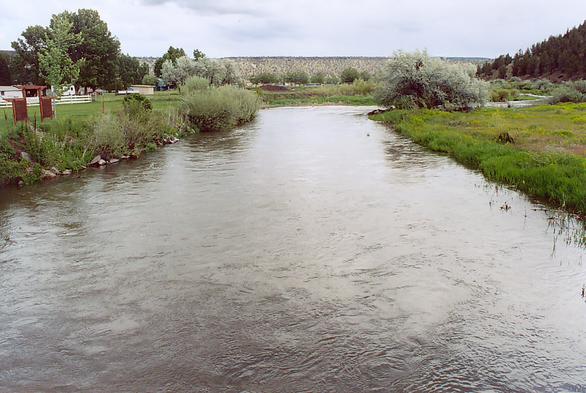|
THE ATT-KIN MODEL
In the mid-1970s, I was pursuing a Ph.D. at Colorado State University, and was fortunate to be at the right place at the right time.
There, I had the pleasure of close association with a select group of individuals from all over the world.
One of these students was Fredrick D. Theurer, "Fred" to his friends,
who, in 1975, completed a Ph.D. under the supervision of Dr. Everett Richardson.
After graduation, Fred rejoined his employment at the Natural Resources Conservation Service,
the former Soil Conservation Service (SCS), in Washington, D.C. Fresh out of school,
he told his bosses that the convex routing method was no good
and that it had to be
replaced by a better channel routing tool.
The convex method, developed by SCS
in the mid-1950s, was a linear kinematic wave model
featuring built-in, uncontrolled numerical diffusion.
In practice, this meant that it lacked consistency, i.e.,
a routed hydrograph could not be reproduced
by substepping the reach length.
In other words, the convex method was grid-dependent; i.e.,
two choices for space step would invariably
give two different answers.
Seeking a better routing tool,
SCS developed in the late 1970s, with the help of Fred,
the Modified Att-Kin model. The method divided the routing into two sequential steps: the first
designed to provide reservoir attenuation (the "att"),
and the second to provide kinematic translation (the "kin").
While the
model fared well in tests designed to prove consistency, it was not without its pitfalls.
The matter was clarified
in the 1990s, when the theoretical accuracy of the Muskingum-Cunge method was demonstrated.1
It is now generally agreed that
the Muskingum-Cunge method is the only hydrologic channel
routing method that is: (1) stable, (2) convergent, and (3) consistent,
when used within its established parameter ranges.
Unlike the convex method,
the Muskingum-Cunge
method simulates the diffusion wave model; therein its strength. 2
1 Ponce, V. M., A. K. Lohani, and C. Scheyhing. 1996.
Analytical verification of Muskingum-Cunge routing.
Journal of Hydrology, 174(1996), 235-241.
2 Ponce, V. M., and D. B. Simons. 1977. Shallow wave propagation
in open channel flow.
Journal of the Hydraulics Division, ASCE, 103(HY12), 1461-1476.
|
